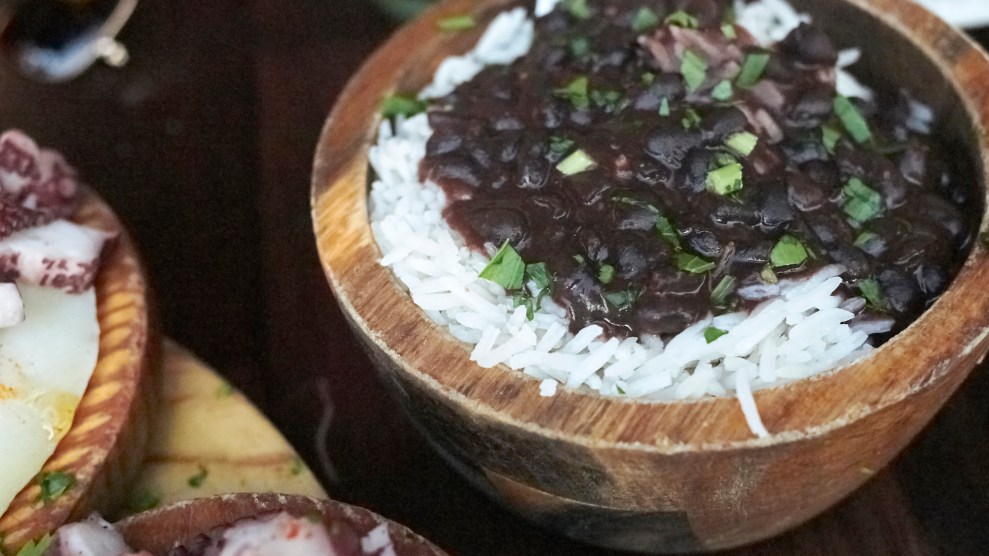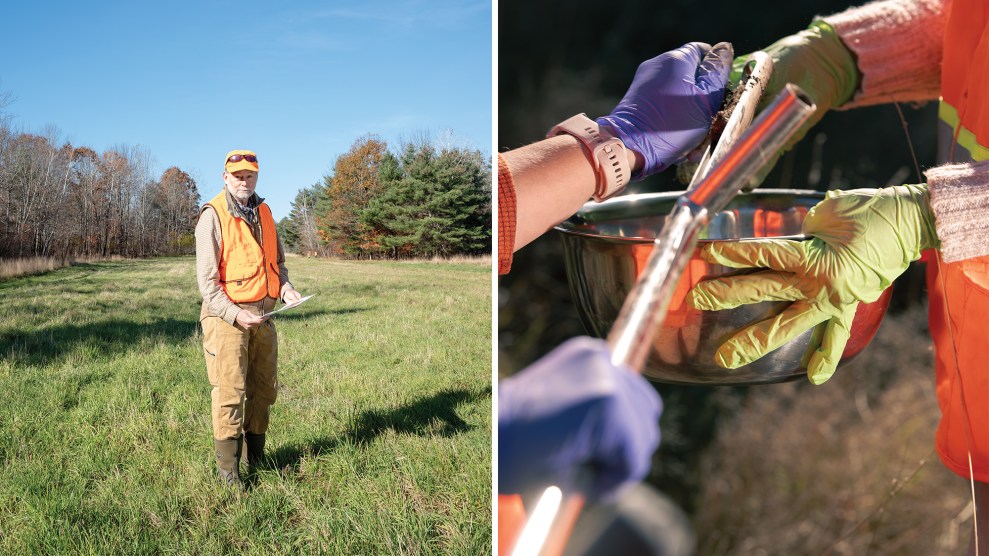
simona flamigni/Getty
“Everything about a bean is fashionable,” an exec from a market-tracking firm recently told the Wall Street Journal. “Beans, it seems, are on everyone’s minds,” echoes Gabriella Paiella on New York’s style blog, The Cut. She calls them “sturdy, reliable, versatile, an affordable vegetarian protein source.”
All true—and they’re also delicious. When venture capital firms pump big money into elaborate burger-mimicking soy-protein patties and lab-cultured meat, my first thought is always: Have these bros ever had a good plate of beans (or falafel)? I get that it’s more complicated than that—you’re not going to win over every Whopper eater with some fantastic braised beans over toast.
Hear about the climate cost of meat on this episode of Bite:
Still, braising is a simple, potent technique that can turn beans of any kind into a memorable meal—one that will make you forget the absence of meat. You saute some aromatic vegetables—onion, garlic, maybe carrots and celery—add herbs and spices, and toss in cooked beans with a little of their liquid, and let the whole thing cook down until the legumes are swaddled in a thick, deeply flavored paste. From there, you can wrap tortillas around them for a first-rate taco; combine them with rice; or, as I did with my latest batch, spoon them over toast.
Canned beans work great. And though I pressure-cooked cooked dry beans for this preparation (technique here), I built the recipe around 1.75 cups of cooked beans, the equivalent of a can. I went with black beans, but kidney beans, white beans, and chickpeas all work marvelously. You can tweak seasonings based on what’s on hand, and this recipe is easily scaled up.
Braised Black Beans
(Yields two generous portions)
Ingredients
1/2 large onion, chopped
2 cloves garlic, minced
1 chipotle or morita chili, soaked in hot water for a few minutes to rehydrate, then minced*
3 tablespoons olive oil (or bacon fat or good lard, which will deepen the flavor)
1 teaspoon of dried oregano or the leaves of several sprigs of fresh oregano, chopped
2 tablespoons tomato paste
1.75 cups (equivalent to one can), cooked black beans, with liquid
Red wine vinegar, to taste
Salt and ground black pepper, to taste
* Chipotles and moritas add a smoky note, but pinch of crushed red chili flakes will work, too.
Directions
Place the olive oil in a smallish pot over medium heat and saute the onions, stirring often, until they’re soft, about 10 minutes. Add the garlic, oregano, chili pepper, and cook, stirring, until the garlic is fragrant, just a minute or too. (Be careful not to scorch the garlic). Add the tomato paste and turn heat to medium-low, and cook, stirring often, until the liquid is mostly gone and you’re looking at brick-colored onions. And the beans and their liquid, and turn the heat up. When the mixture begins to bubble, give it a good stir, turn heat to low, and let the beans simmer, until their liquid has thickened into a paste. Add a splash of vinegar to brighten and balance the flavors, a good grind of pepper, and taste for salt, adding as needed. Serve over toast, beans, or tortillas. Chopped cilantro and sliced avocados makes a great garnish.
















